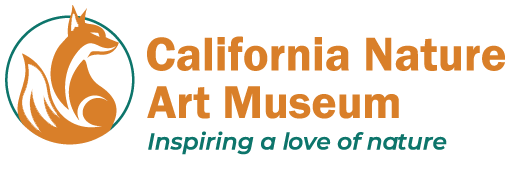mission
The California Nature Art Museum’s mission is to inspire stewardship of nature through art and education. We provide artistic, educational, and field experiences of nature for that purpose.
Our vision is to be recognized as an exceptional and inclusive leader in inspiring our diverse communities and visitors to value nature through the vision of artists. The museum collaborates with partners for the benefit of our region.
Henry J. Breuer, From the Lowest to the Highest Point, oil on canvas, 1918, 2001.2.1
the artists role in protecting wilderness
Artists have played a vital role in the protection of wild places. Capturing the beauty of landscapes, especially those places yet unseen by the majority of the population, inspired a desire to preserve wild lands for future generations to witness and enjoy.
Wilderness has always been a part of the American experience and shaped our identity. How it has been perceived has changed with time. Initially the first settlers were intimidated by the vast and unknown wilderness around them, but they also knew they were blessed to have such richness of resources. Thomas Jefferson asked Lewis and Clark in 1804 to document the wild creatures and landscapes they came across on their explorations, and so began the process of categorizing the natural history of this new wild continent--the unknown became known. As towns and cities grew, people became divorced from the landscape and wilderness became a place of renewal.
In the early and mid-19th century, artists painted an often romanticized view of the wild landscape. As the western frontier expanded, artists and explorers discovered beautiful wild places not yet imagined. Their artwork was sent to lawmakers and presidents, and built a case for preserving these places.
Artist George Catlin made the first public call for preserving wild lands in 1841. John James Audubon was also an early artist that began advocating for conservation in the mid-nineteenth century. Thomas Moran, Albert Bierstadt, and others were popular landscape artists of that time period and their work inspired the nation.
The discovery and artwork of Yosemite ignited the first effort to preserve the land for future generations. President Lincoln granted California a land grant for Yosemite in 1864 with the mandate it be made available for recreation as well as preserved for future generations.
Elsewhere, the boiling mud and geyser eruptions that were witnessesed at the headwaters of the Yellowstone River captured the imagination of explorers. The growth of the transcontinental railway led to explorations ofYellowstone. Thomas Moran was hired to accompany a U.S. Geological Survey in 1871 to visit and sketch the region. His paintings, documents from the survey led by Dr. Ferdinand V. Hayden, and photographs by William H. Jackson were the proof Congress needed to declare the first national park in 1872. Artists' visual interpretations of our country's wilderness as well as their public pleas for conservation were instrumental in their preservation--and still inspire us today.

